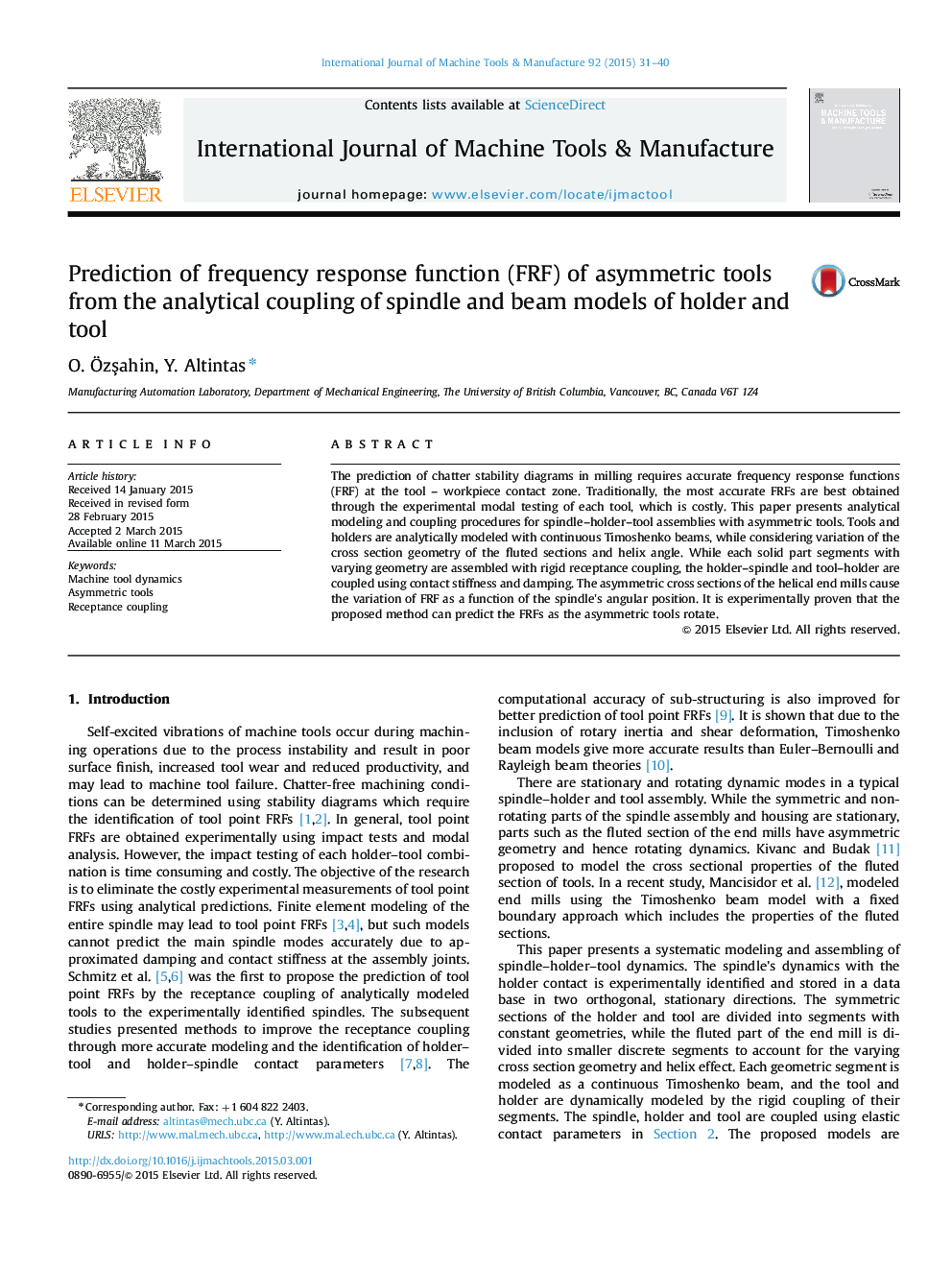| Article ID | Journal | Published Year | Pages | File Type |
|---|---|---|---|---|
| 780701 | International Journal of Machine Tools and Manufacture | 2015 | 10 Pages |
•Tools and holders are analytically modeled with continuous Timoshenko beams.•Asymmetric geometry of the fluted section and helix angle are considered in the elastic model of the helical end mills.•Stationary spindle dynamics is coupled with rotating tool dynamics using coordinate transformations.•Proposed method is experimentally verified to predict the FRFs as the asymmetric tools rotate.
The prediction of chatter stability diagrams in milling requires accurate frequency response functions (FRF) at the tool – workpiece contact zone. Traditionally, the most accurate FRFs are best obtained through the experimental modal testing of each tool, which is costly. This paper presents analytical modeling and coupling procedures for spindle–holder–tool assemblies with asymmetric tools. Tools and holders are analytically modeled with continuous Timoshenko beams, while considering variation of the cross section geometry of the fluted sections and helix angle. While each solid part segments with varying geometry are assembled with rigid receptance coupling, the holder–spindle and tool–holder are coupled using contact stiffness and damping. The asymmetric cross sections of the helical end mills cause the variation of FRF as a function of the spindle's angular position. It is experimentally proven that the proposed method can predict the FRFs as the asymmetric tools rotate.
